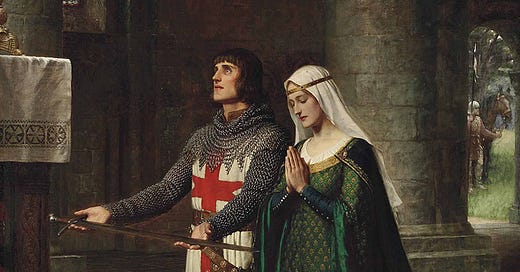What were the Middle Ages? In the popular imagination, we often tend to think of it in terms of knights, dragons, elves, and princesses.
But there are a lot of misconceptions about this historical period. Most people think that medieval people believed in a Flat Earth, didn’t bathe, used torture, and forced their gorgeous young women to wear chastity belts. But all of these are just myths.
Here’s the real story about life in medieval Europe from the 5th to the 15th century.
Flat Earth?
Much of our modern perceptions about the Middle Ages come from later writers, who disparaged this epoch of history. A biographer of Christopher Columbus in the 19th century incorrectly claimed that medieval Europeans were Flat Earthers. Medieval people were superstitious, but they understood basic science.
Many medieval scholars wrongly thought the Earth was the center of the universe, but there was little debate about the planet’s shape. One text from the 13th century is called On the Sphere of the World.
With the establishment of monasteries, convents, and universities, literacy rates increased across European Christendom. Ancient Greek and Roman texts were not lost, and they continued to be closely studied well throughout the so-called Dark Ages.
Dirty people?
The idea that medieval Europeans ate rotten meat was popularized by a British book in the 1930s. This was based on a misinterpretation of a medieval recipe. The book wrongly interpreted laws banning the sale of rotten meat as evidence that it was regularly consumed.
In fact, medieval people regularly avoided rotten foods. They invented methods for curing meat, such as the use of salt. Spices were popular for preserving meat, although they were not widely accessible because of the high price. Most people who could afford spices could also afford good meat.
In the 19th century, French historian Jules Michelet referred to the Middle Ages as “a thousand years without a bath.” Was this true? No.
In the Middle Ages, even small towns had well-used, well-maintained public bathhouses. Animal fat, ash, and scented herbs were used as soap. They used powders and pastes to scrub their teeth, as an early form of mouthwash.
Torture?
In the 1890s, circuses hosted shows of barbarous torture methods, which supposedly dated from the Middle Ages. The most famous was the Iron Maiden, which fascinated viewers with its spiked doors. But the Iron Maiden was fabricated just decades before. There is no indication that the Iron Maiden existed in medieval times. There was a Pear of Anguish, but it was probably used to stretch shoes; it was not used for torture.
Common medieval punishments included fines, imprisonment, public humiliation, and certain forms of corporal punishment. However, the more outlandish torture stories are not true. Most of those gruesome tactics were reserved for the absolute worst crimes, such as high treason.
Chastity belts?
Under the spell of medieval popery, surely the Christians of Europe went to extreme lengths to avoid the pleasures of the flesh, right? Well, this is also wrong.
The first mention of a chastity belt comes from a German engineer in the 15th century. It was probably conceived as a joke. Such a ridiculous proposal appears alongside the likes of fart jokes and a device to turn invisible. Chastity belts were invoked satirically to mock the Middle Ages, but this was mistaken for reality.
Dark Ages?
The term “Dark Ages” was invented in the 15th and 16th centuries as a self-conscious way of disparaging the Middle Ages. These writers looked to the glories of Antiquity and modernity, seeing the Middle Ages as the sagging intermission period between those epochs of light. As Enlightenment thinkers celebrated rationality, they depicted their medieval predecessors as superstitious and irrational people.
The reality, as always, is a little more complicated. In certain respects, medieval Europe was a highly open, globalized society. The Europeans exchanged ideas and customs along trade routes with Byzantium, the Islamic world, and the Mongols. Merchants, intellectuals, and diplomats from foreign lands regularly frequented the capitals of Europe.
The biggest myth about the Middle Ages is its very definition. The Middle Ages spans a period of a thousand years. It was hardly hegemonic. There were the Early Middle Ages, characterized by Vikings and Normans. There were the High Middle Ages, seen in the writings of Thomas Aquinas and Chaucer. There were the Late Middle Ages, which saw a flourishing of international Gothic architecture across the continent.
The Middle Ages are often defined more by what they aren’t, than by what they are. For this reason, it can be easy to overlook those contributions to human progress which did occur in the medieval West.





